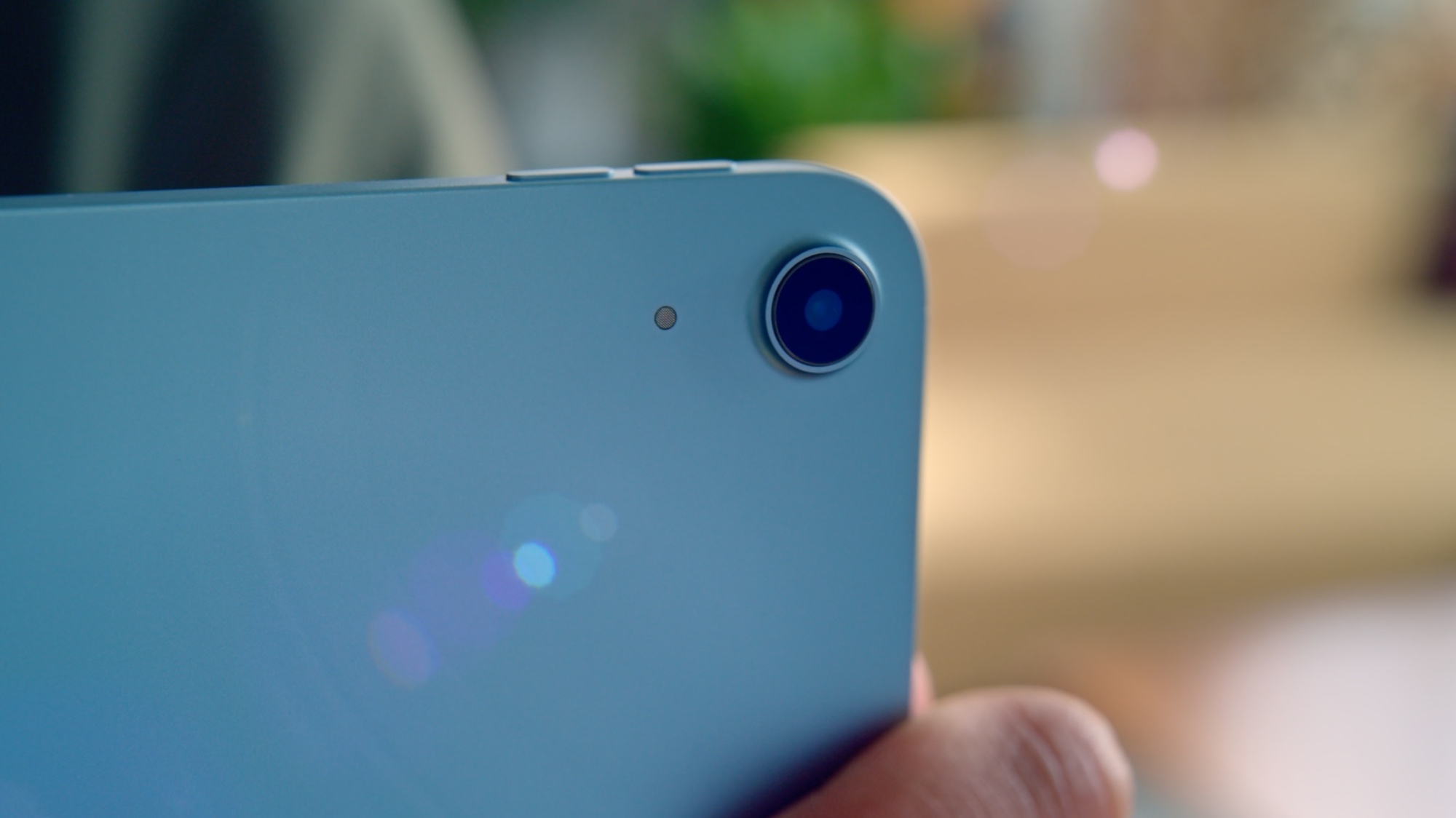The Huggable Virtual Reality Headset: Merge VR Hands-on
Merge VR offers an approachable, affordable virtual reality headset for the masses.
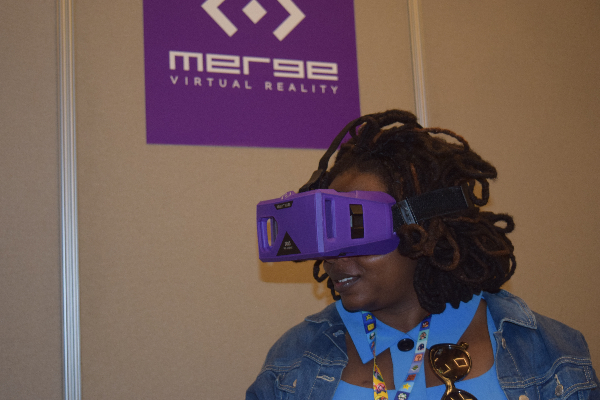
LOS ANGELES - Merge VR isn’t like the other VR headsets competing for your attention. First off, the device is colored a regal purple, and the material is huggably soft. Second of all, the headset is one of the few on the market that can do both augmented and virtual reality. Lastly, this smartphone-powered headset will actually be available for consumer purchase during the upcoming holiday season at an affordable $129.
Design
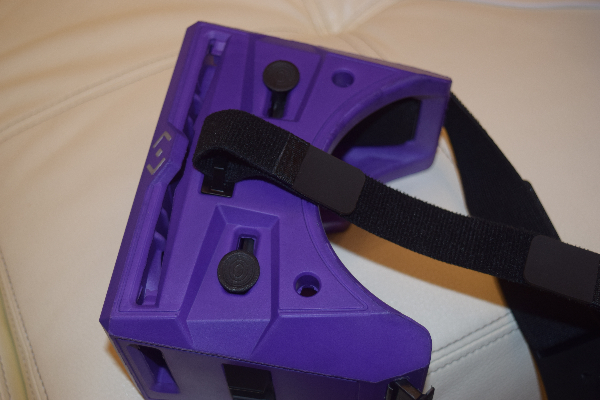
Instead of the hard plastics that offer little to no give against your face, the Merge VR is made from antimicrobial foam that is squishy to the touch. The material is surprisingly durable, which is great if you’re clumsy or have kids. Even better, you can wipe it down if it gets dirty without the threat of water damage and maintain the gear’s hygiene.
Cleanliness aside, the Merge VR is damned comfortable. It already won my vote when if fit over my faux afro – a feat that OculusVR’s Crescent Bay prototype could not accomplish. Once settled over my voluminous ‘do, the foam pressed against my face, creating a comfortable yet secure fit.
At first glance, the front of the device looks like a solid piece of foam. Upon closer examination, you’ll discover a large piece can be removed, revealing your smartphone’s camera for augmented reality. The panel is easy to take off and reattach, following the company’s directive to keep everything simple.
MORE: Augmented Reality Glasses: What You Can Buy Now
Speaking of smartphones, the Merge VR can accommodate devices as small as the iPhone 5 or as large as the Samsung Galaxy Note 4. The phone is placed into the long rectangular slot at the top of headset. Smaller devices will be held in place by as series of built-in notches while larger phones will stretch out the space, creating a secure pocket.
The Merge VR lenses can be adjusted for position via a pair of black knobs at the top of the device. The knobs are 3D-printed and are one of the few pieces not made of foam. The design I saw was pre-production, and the levers will act as touch controls on the final product.
Get instant access to breaking news, the hottest reviews, great deals and helpful tips.
Compatibility
As a mobile-dependent device, the Merge VR works with both Android and iOS (sorry Windows Phone fans). The headset is compatible with a variety of modern smartphones, ranging from the newest models to as far back as the iPhone 5S, Samsung Galaxy S5 and the HTC One M8. While you can use the device with older generations of phones, Merge VR CEO Franklin Lyons says it won't work as well.
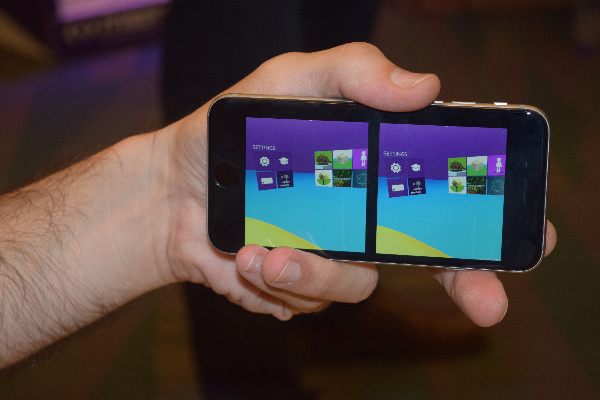
Merge Smart
The Merge VR will rely on the operating system of the phone that's in it. However, in keeping with the ease of use mantra, Merge offers its Smart app, which will aggregate virtual reality experiences that include movies and games. Although I didn't get a chance to play with the hub interface, I noticed that Smart takes some heavy cues from Windows 8 -- down to the colorful tiles.
Merge VR Controller
In addition to the headset, Merge VR will also ship with the VR Controller. The version of the remote I used was made of black 3D-printed material. It was also lighter and slimmer than a Wii remote, featuring a 9-axis built-in sensor for smoother, more accurate motion detection. Using Bluetooth LE, the controller automatically pairs to your smartphone, eliminating the need to access the Settings menu.
The VR Controller can be used in an upright position, or sideways, similar to a traditional game controller. When the remote is not in use, it snaps neatly into the 3D-printed groove located on the right side of the Merge VR headset.
MORE: Best Gear VR Games
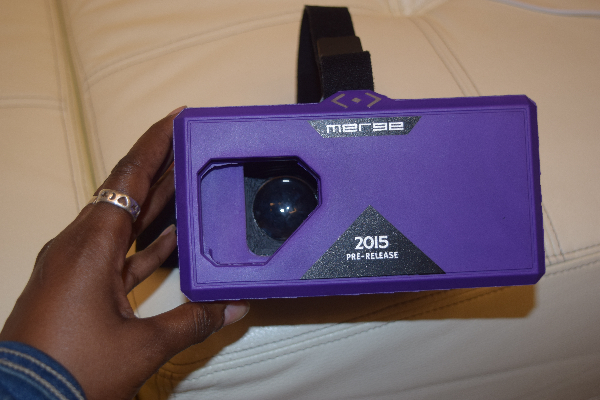
Useability
As the sum of its all its parts, I found the Merge VR to be a solid alternative to other VR devices. However, the Merge VR isn't for consumers looking for high-end specs and futuristic features, which explains the device's narrower field of vision compared to other headsets. According to Lyons, Merge is hoping to provide "realistic virtual reality for the masses."
During my demo, I took control of a polygonal aircraft in the game Faceted Flight. Similar to Temple Run mixed with a hint of Flappy Bird, the game had me use the VR controller to navigate through an obstacle course filled with plenty of rocky outcroppings and ledges to avoid.
While it didn't match the high-definition demos offered by Crytek or Oculus, I was impressed with the near-immediate response of the VR Controller as I twisted and barrel-rolled my way through the course, defeating my best score three times.
While the headset produces a solid virtual reality situation, that's only part of the equation. The Merge VR also offers an augmented reality experience that Lyons foresees being used for educational or medical purposes.
My demo was short, but to the point. I was presented with what looked like a regular piece of paper. However, with the headset on, a 3D-rendered triceratops rose from the page.
Bottom Line
While the hype surrounding virtual reality is reaching a fever pitch, we've yet to see many consumer-ready products come to market. With its unintimidating looks, comfort and ease of use, the affordable Merge VR headset could potentially break the trend. If it does launch as planned this holiday season, the huggable headset could act as the accessible ambassador to mainstream consumers.

Sherri L. Smith has been cranking out product reviews for Laptopmag.com since 2011. In that time, she's reviewed more than her share of laptops, tablets, smartphones and everything in between. The resident gamer and audio junkie, Sherri was previously a managing editor for Black Web 2.0 and contributed to BET.Com and Popgadget.
